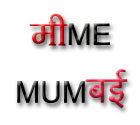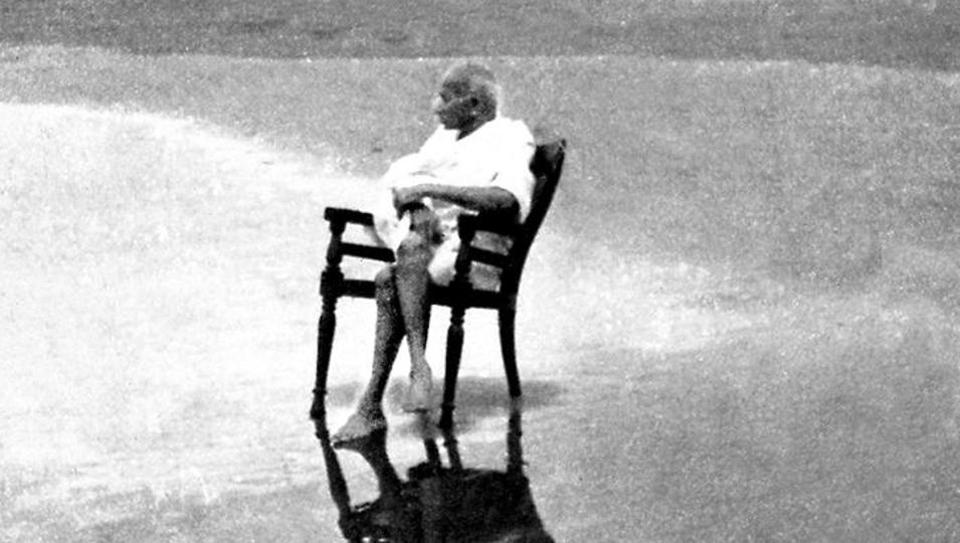To most historians, the Mahatma can come across as a man whose heart lay in rural India and who cared little for the privileged few in the cities. And yet, MK Gandhi spent several years in Mumbai — or Bombay as the city was then called — first as a potential barrister, then as a lawyer with an established practice, and finally, over three decades, as the man who led India to freedom.
Above photo: Mahatma Gandhi at Juhu Beach, Bombay, May 1944 (Alamy Stock Photo)
From Mani Bhavan, the modest two-storey home of his friend, Revashankar Jhaveri, on the leafy Laburnum Road, Gandhi spearheaded at least six national movements. “This is no accident,” says historian, Sandhya Mehta, who co-authored the 2016 book, Gandhi in Bombay: Towards Swaraj with Usha Thakkar. “Bombay was the fund-raising centre. It’s the middle-class cloth merchants from Mulji Jetha market, not rich mill owners, who contributed to his causes.”
Bombay was where Gandhi made public speeches at mill compounds, where the supporters included elite families, shopkeepers, women and students. Fund-raising speeches often ended with women handing over their jewellery. A third of the Rs 1 crore fund for the Non Cooperation movement in 1921 was raised here.
Early days
In 1891, a 21-year-old Gandhi who had recently studied the law in London, reached Bombay, hoping to set up a practice. The city was smaller then, its population just over 800,000, its edges stretching until Bandra. It wasn’t a stellar start. At his début at the Small Causes Court in Marine Lines, he was expected to cross examine a witness. “I stood up, but my heart sank into my boots,” he wrote in his autobiography, The Story of My Experiments with Truth. Overcome by stage fright, he fled the courtroom, not fighting a case until he moved to South Africa in 1893. But Gandhi attended the Bombay High Court every day, walking 45 minutes to and from his home in Girgaum. In court, he couldn’t follow the cases and would doze off, like several others. Six months in, he joined his brother in Porbunder to do petty legal work, and eventually left to work for a trading firm in South Africa.
A decade later, when Gandhi returned to India and moved to Bombay after a month in Calcutta, he stayed longer and prospered. By 1902, employed at the offices of Payne, Gilbert and Sayani, he rented a damp house in Charni Road. This is where his second son, Manilal, fell seriously ill with typhoid, prompting the family to move to a better ventilated bungalow in Santa Cruz. Gandhi now took the train to town, alone in his first-class compartment. He’d often walk to Bandra, to get a faster train to Churchgate. The court naps, though, continued. However, by the end of 1902, he was recalled to South Africa.
On January 9, 1915, a crowd gathered to greet Gandhi and his wife, Kasturba, as their ship, the S.S. Arabia docked in Apollo Bunder. “I was filled with joy when, nearing Bombay I sighted the coast,” Gandhi wrote in a letter to his relative, Maganlal. The Bombay Chronicle published at the time described the scene: “…the press of people was so great that it was with difficulty that they reached their motor car and by the time they did so they were almost hidden by garlands.” Gandhi delivered his first speech the very next day at Hira Baug hall in Girgaum.
Over the following week, receptions were held for him at JB Petit’s bungalow on Pedder Road (possibly where the Vama store now stands) and at Mangaldas House off Lamington Road (the site of Imperial Cinema). In attendance were Bhalchandra Krishna, BG Horniman, Revashanker Jhaveri, Mohammed Ali Jinnah, Pherozeshah Mehta and Dorab Tata.
Gandhi held many meetings across Bombay over the years. At what is now the Empire and Excelsior cinemas, he demanded the abolition of indentured labour. At the Seth Morarji Gokuldas Hall near Gaiwadi, he stirred up ideas of tyag, seva, prem and bhakti (sacrifice, service, compassion and devotion) among women of the Bhagini Samaj. He’d meet “untouchable” castes in Walpakhadi, near Dongri.
When Gandhi started a 24-hour fast to kick off the 1919 satyagraha opposing the Rowlatt Act, thousands — women, children, Hindus and Muslims — joined him in taking a ritual dip in the Chowpatty sea.
However, perhaps no single act binds Gandhi to the city as closely as the events of July 1921 in the Elphinstone mill compound in Parel. “Swaraj is impossible without Swadeshi,” declared Gandhi, honouring Lokmanya Tilak as spectacular bonfires of foreign-made saris, shirts and jackets were first lit. History records more than 10,000 attendees. This event sparked bonfires across India as people began to reject foreign goods.
Bombay was where religious unity was not only a possibility, it was celebrated. When Gandhi formally opened Congress House on Lamington Road in 1925, a maulvi, a Parsi, a Christian priest, a Sikh and a sanatanist offered prayers. As Gandhi marched to Dandi from Ahmedabad in 1930, Bombay locals joined in and boiled saltwater from Chowpatty on their terraces.When he launched the Quit India Movement from Gowalia Tank Maidan in 1942, citizens turned Gandhi’s “Do Or Die” slogan into a revolution.T
Mani Bhavan was converted into a memorial in 1955. But most landmarks from Gandhi’s association with Bombay have been demolished, sold off or are in a shambles. Tushar Gandhi wished India had something more tangible, even as small as plaques at historically significant locations.
Article source: Hindustan Times








